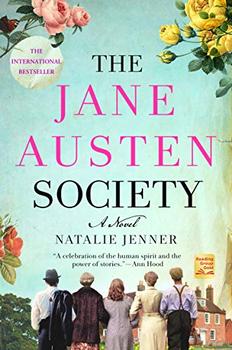Summary | Excerpt | Reading Guide | Reviews | Beyond the book | Read-Alikes | Genres & Themes | Author Bio

Critics' Opinion:
Readers' Opinion:
First Published:
Oct 2013, 352 pages
Paperback:
Jun 2014, 352 pages
 Book Reviewed by:
Book Reviewed by:
Sarah Sacha Dollacker
Buy This Book
If Jane Austen had written Longbourn, she might have begun with a variation of Pride and Prejudice's famous first sentence: "It is a truth universally acknowledged that a gentlewoman in need of a husband is also in need of a good servant." Pride and Prejudice has been turned into movies, adapted for the stage, and inspired many volumes of fan fiction and spin-off stories. In my humble opinion, none of these complement and expand on Jane Austen's most famous novel, quite like Jo Baker's Longbourn.
Longbourn is the childhood home of Elizabeth Bennet, Pride and Prejudice's main character. The Bennets are not wealthy enough to afford full-time maids for the women of the house, so the house servants often have to do double duty. In Longbourn, we hear from Sarah, the young housemaid, who washes the clothes, assists in the kitchen, and sets Elizabeth's curls if she's in need of a lady's maid. Sarah envies the five Bennet daughters their leisure time and marvels at their carelessness with shoes and clothes. She tires of the long hours of work, and dares to imagine a different life for herself. As if on cue, James, the new manservant, enters the picture with a dashing demeanor and a heart full of secrets. Sarah's interest in him turns to frustration when she determines that he would rather keep to himself than confide in her. Meanwhile, Sarah also makes acquaintance with a Creole manservant named Tol Bingley who fascinates her with his ideas about his employers and plans to own a tobacco business. Mrs. Smith, the housekeeper at the Bennets, and a mother figure to Sarah, worries that the young woman will fall in love with Tol and leave Longbourn before she understands the value of working for a happy family in a safe, contented place.
Along this storyline, Baker recreates the world of the Bennets' Longbourn in vivid detail, and it is from this perspective that the novel truly shines. Readers interested in knowing how people ate, slept, loved, and celebrated during Jane Austen's time will find ample illustration here. Even if Sarah's daily experience is preoccupied by the Bennets' needs, her independent spirit urges her to conceive of a life beyond theirs. In this way, as she evolves from a naive child to a mature woman, the novel is fully hers. It is interesting to note that despite the class differences, Sarah's story is similar to Elizabeth's: love and marriage offer the only real change a woman can expect in her life.
In addition to the captivating insights about life "below stairs" in the servants' quarters and the excitement of Sarah's character development, Longbourn attempts to fill in a few gaps left by Austen's famous book. Whereas Pride and Prejudice focuses, among other things, on the delicate inner workings of Regency society and the young ladies' experiences with finding husbands, Longbourn provides historical context and details of place for Austen's story. For example, where Pride and Prejudice spends time exploring ballroom conversations, Longbourn describes the ballroom – and the amount of work the servants put in to make the ball possible. Where Pride and Prejudice mentions the Napoleonic Wars or colonialism in passing, Longbourn delves in, attempting to understand the bubbling tensions in the upper crust of a society that preoccupies itself with more "civilized" pursuits.
In essence, though the storylines for both Pride and Prejudice and Longbourn unfold concomitantly and many plot points overlap, Baker's intent is not to retell the story of Austen's classic. Pride and Prejudice simply provides a delightful context for Longbourn, which stands well on its own. It soon becomes obvious that Pride and Prejudice and Longbourn create a delightfully unified whole. It is possible to read one without the other, but reading them together provides a broad and nuanced view of early 19th century England - and takes readers into the lives of some of literature's most beloved characters.
![]() This review was originally published in The BookBrowse Review in October 2013, and has been updated for the
July 2014 edition.
Click here to go to this issue.
This review was originally published in The BookBrowse Review in October 2013, and has been updated for the
July 2014 edition.
Click here to go to this issue.

If you liked Longbourn, try these:

by Jillian Cantor
Published 2022
USA Today bestselling author Jillian Cantor reimagines and expands on the literary classic The Great Gatsby in this atmospheric historical novel with echoes of Big Little Lies, told in three women's alternating voices.

by Natalie Jenner
Published 2021
Just after the Second World War, in the small English village of Chawton, an unusual but like-minded group of people band together to attempt something remarkable.





The House on Biscayne Bay
by Chanel Cleeton
As death stalks a gothic mansion in Miami, the lives of two women intertwine as the past and present collide.

The Flower Sisters
by Michelle Collins Anderson
From the new Fannie Flagg of the Ozarks, a richly-woven story of family, forgiveness, and reinvention.

The Funeral Cryer by Wenyan Lu
Debut novelist Wenyan Lu brings us this witty yet profound story about one woman's midlife reawakening in contemporary rural China.
Your guide toexceptional books
BookBrowse seeks out and recommends the best in contemporary fiction and nonfiction—books that not only engage and entertain but also deepen our understanding of ourselves and the world around us.